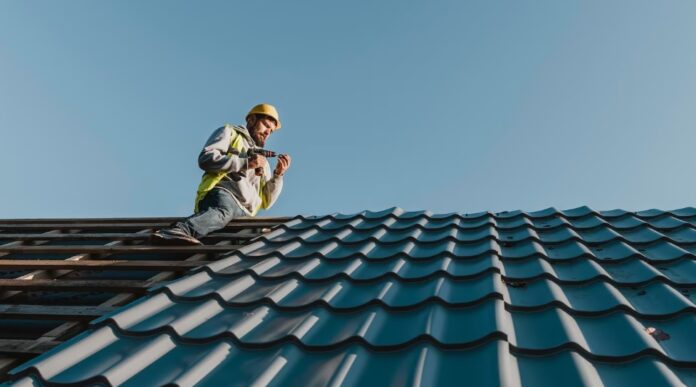If you suspect your roof is nearing the end of its lifespan, it’s important to check it regularly. Usually, the best place to do so is in your attic or crawlspace.
Look for sagging and drooping, indicating trapped moisture and rotting boards underneath. Also, notice if the shingles are curling on the edges or in the middle, which indicates they’re starting to warp.
Sagging
Sagging roofs are one of the most obvious signs that it’s time to replace your home’s roofing system. This symptom indicates that there isn’t enough support to keep the weight of your roof up, and it can cause severe damage to your home if left untreated.
To determine if your roof is sagging, you’ll want to examine it from the outside and then go upstairs to the attic. You’ll need a level or plumb bob to check for sagging areas, humps, pillowing, bowing, and other irregularities.
A slight sagging doesn’t necessarily mean your roof is on the verge of collapse. However, it would help if you acted quickly to avoid costly structural problems down the road. If left unattended, a sagging roof could cause mold, mildew, and water damage.
Water Damage
Water damage to the roof and ceilings of a home is always a sign that the top needs roof replacement. It could result from a major storm or the accumulation of several seasons worth of water seeping in.
Typically, a leaky roof shows itself as visible puddles during rainstorms. However, the leaks are sometimes more subtle, such as stains on the ceiling and walls of the home or the smell of mold or mildew.
Another indicator of a leaky roof is brown “rust” stains on the attic floor or crawlspace. Also, check your gutters to ensure they are free from clogs and positioned to drain away from the house. Keeping your roof in good shape will prevent many expensive problems.
Leaks
You need a roof replacement if you see signs of water damage or leaks. Leaks allow water to penetrate the exterior of your home, leading to rot and mold growth. Inspect your roof regularly, especially at the end of summer and winter, to catch any problems before they worsen.
Brown stains on your ceiling are another telltale sign that you have a leaky roof. These spots are often caused by moisture reaching the walls of your house, which can lead to rotting framing, mold growth, and a decrease in air quality.
Hissing sounds are also a good indication that you have a roof leak. Call a professional in residential roofing immediately to address the problem if you hear any of these.
Damaged Shingles
Shingles protect your roof from the elements. Therefore, they can be damaged by a lot of wear and tear. You can spot signs of a roof replacement by keeping an eye on the condition of your shingles. If shingle grains accumulate in gutters or other areas, this is one of the most obvious signs that you need a new roof. As shingles begin to degrade, they start to fall.
If you notice more creepy crawlers in your attic, it may be because your roof is compromised. You can consult a roofing professional to determine if you need to replace your roof. You should find out as soon as possible.
Leaky Attic
If you see light coming through your ceiling, it means water has entered your home. This could cause major damage to the house and costly repairs if not treated.
Dark spots or trails on your attic or walls indicate that moisture is penetrating your roof. This moisture can lead to rot, mold and mildew in your home, which will be costly.
To prevent these problems, it’s important to check your attic regularly for signs of a leaky roof. By keeping an eye on your attic, you can identify and repair holes or cracks before they cause serious problems. It’s often easier to spot these issues from underneath than above, as accessing the crawl space is usually safer and more straightforward than climbing the attic.


